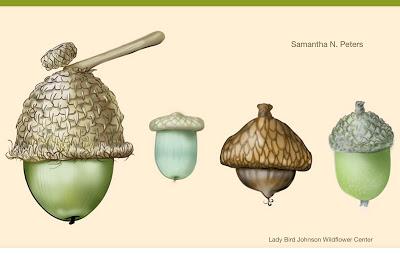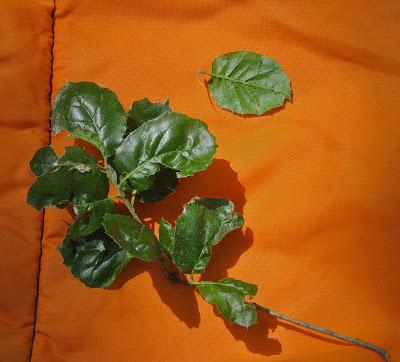 Coast live oaks, Quercus agrifolia, in the California Coast Range.
Coast live oaks, Quercus agrifolia, in the California Coast Range.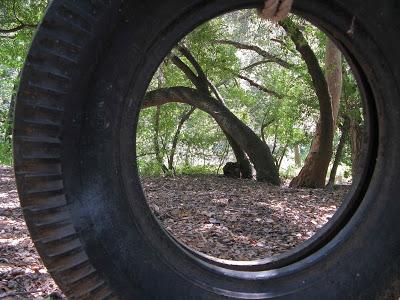 Free time has been scarce lately, so I’m offering a short post on oaks, inspired by “Querc-y Characters” at the Lady Bird Johnson Wildflower Center website.I have a fondness for the Wildflower Center that surfaces at the least provocation, for I once talked plants with Lady Bird! It was 40 years ago, when I was botanist and sole employee of the Wyoming Natural Diversity Database. Jane Sullivan, wife of the governor, invited a small group of botanically-inclined ladies to gather for tea with Mrs. Johnson in Jackson Hole, at the base of the Grand Tetons. Conversation was awkward at first, but Lady Bird had done her homework, and as we introduced ourselves, she responded with what she had heard or read about our work. Soon we were happily discussing plants. Afternoon tea is not my idea of fun in the Tetons—I prefer hiking. But I really enjoyed my time with Lady Bird. She was so gracious and down-to-earth, a wonderful mix.Now to the oaks …
Free time has been scarce lately, so I’m offering a short post on oaks, inspired by “Querc-y Characters” at the Lady Bird Johnson Wildflower Center website.I have a fondness for the Wildflower Center that surfaces at the least provocation, for I once talked plants with Lady Bird! It was 40 years ago, when I was botanist and sole employee of the Wyoming Natural Diversity Database. Jane Sullivan, wife of the governor, invited a small group of botanically-inclined ladies to gather for tea with Mrs. Johnson in Jackson Hole, at the base of the Grand Tetons. Conversation was awkward at first, but Lady Bird had done her homework, and as we introduced ourselves, she responded with what she had heard or read about our work. Soon we were happily discussing plants. Afternoon tea is not my idea of fun in the Tetons—I prefer hiking. But I really enjoyed my time with Lady Bird. She was so gracious and down-to-earth, a wonderful mix.Now to the oaks …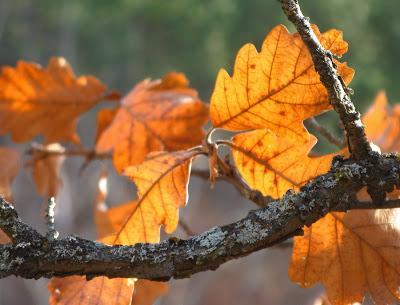 Bur oak leaves, Dugout Gulch Botanical Area in the Black Hills.
Bur oak leaves, Dugout Gulch Botanical Area in the Black Hills.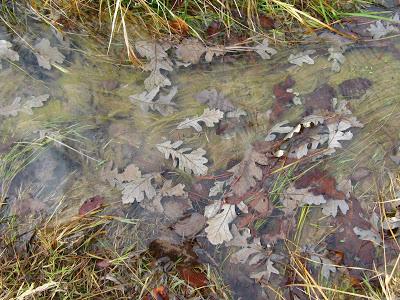 In Wyoming, we have two oaks, both at the edge of their range here. Bur oak, Quercus macrocarpa, is a tree of the eastern and midwestern US that reaches its westernmost extent in northeastern Wyoming, mainly in the Black Hills. Gambel oak, Quercus gambelli, is common in Colorado and the southwestern US, but in Wyoming it grows only in the Sierra Madre, near Colorado. I was going to add “northernmost extent” but when I checked the NRCS PLANTS Database distribution map, I discovered that Gambel oak has been reported from South Dakota! However, there’s no county recorded, and the Forest Service FEIS treatment doesn't mention South Dakota. This would be a major disjunction, and news to me. But it’s an oak matter for another time.
In Wyoming, we have two oaks, both at the edge of their range here. Bur oak, Quercus macrocarpa, is a tree of the eastern and midwestern US that reaches its westernmost extent in northeastern Wyoming, mainly in the Black Hills. Gambel oak, Quercus gambelli, is common in Colorado and the southwestern US, but in Wyoming it grows only in the Sierra Madre, near Colorado. I was going to add “northernmost extent” but when I checked the NRCS PLANTS Database distribution map, I discovered that Gambel oak has been reported from South Dakota! However, there’s no county recorded, and the Forest Service FEIS treatment doesn't mention South Dakota. This would be a major disjunction, and news to me. But it’s an oak matter for another time.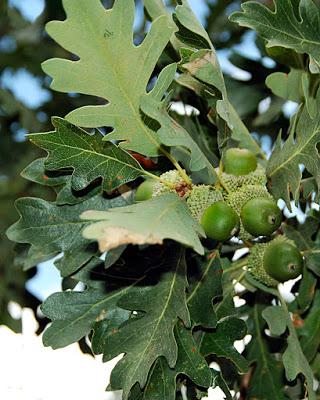
Gambel oak; source.
In a way, we’re lucky we have just two oaks in Wyoming. I worked several winters in southeast Arizona, and struggled with the oak situation there. Apparently it’s even worse in Texas … or better, if you're not obligated to come up with identifications. Texas has more oak species than any other state in the US. Amy McCullough has put together an elegant straightforward guide to four of the common ones in Central Texas: Querc-y Characters, illustrated by Samantha N. Peters. Besides being a work of art, it shows clearly the characters and challenges in oak identification.